Over time, your vehicle’s paint can become marred by swirl marks, scratches, oxidation, and other below-surface defects that dull its shine.
Restore the brilliance of your vehicle’s finish with Supreme Finish Auto Detailing’s expert Paint Correction services in Raleigh, NC.





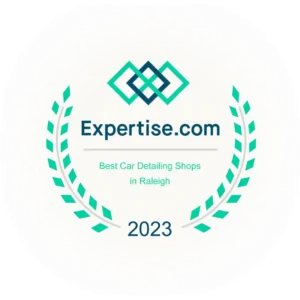
Paint defects embedded in or below the clear-coat
Paint defects above or on the auto body
Understanding the types of imperfections that can be remedied with paint correction is essential for anyone looking to enhance their vehicle’s appearance. Paint correction focuses on removing defects that mar the surface without compromising the clear coat.
Clear coat failure is a serious below-surface paint defect that occurs when the clear protective layer of paint is compromised due to oxidation, prolonged UV exposure, or harsh chemical agents.
As the clear coat deteriorates, it delaminates from the vehicle’s surface, leaving the underlying color layer vulnerable to immediate damage from the elements.

Swirl marks, also known as spider web swirls, are fine scratches visible on the surface of many vehicles. These below-surface defects hide the paint’s true color, gloss, and reflectivity.
When layers of swirl marks accumulate, they scatter light in random directions, making it difficult to appreciate the actual condition and appearance of the paint.

Marring is a type of below-surface paint defect caused by the abrasion of paint. Unlike traditional scratches, marring doesn’t have a sharp or hard edge, but it is still the result of friction.
Although less severe than a scratch, marring can still dull the paint’s finish and affect its overall appearance. Proper care during washing and handling can help prevent marring.
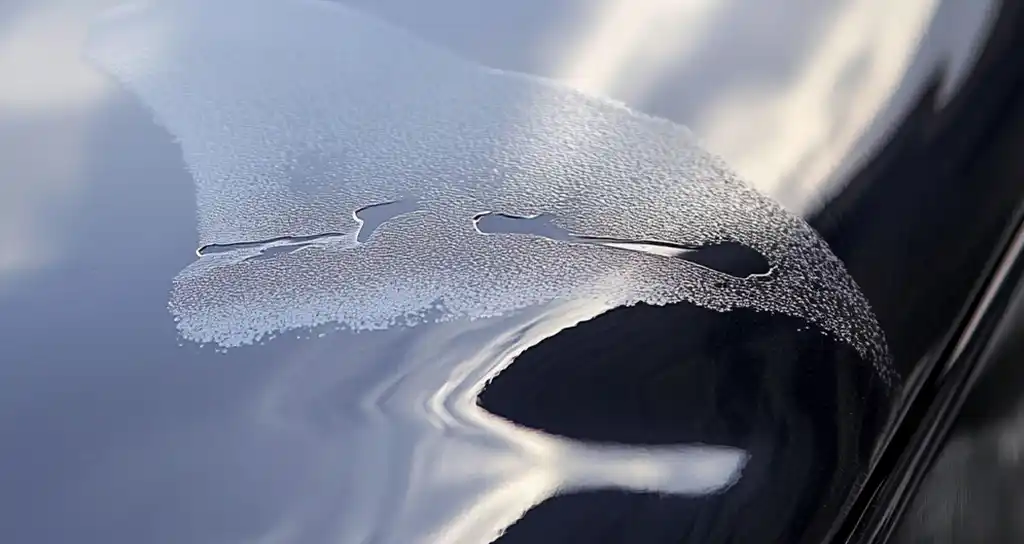
Bird droppings contain acids and proteins that can be highly damaging to paint. Bird drop etchings are small, crater-like blemishes on the clear coat of a vehicle’s surface.
The severity of these etchings depends on how long the droppings remain on the surface and the strength of the bird dropping’s chemical makeup.
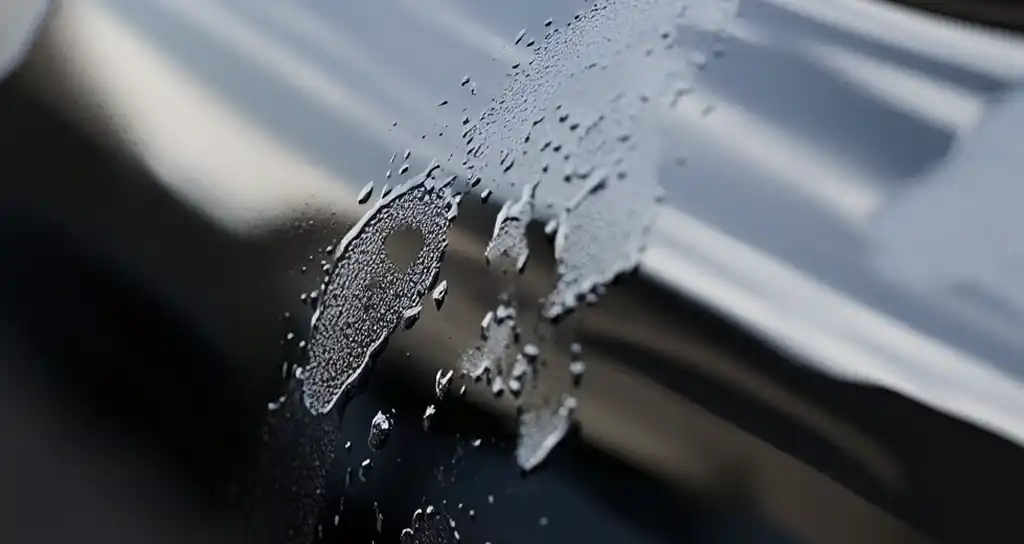
Paint oxidation and color fading are below-surface defects that occur at the clear coat or base coat level. These issues are caused by prolonged exposure to the sun’s UV rays and environmental elements.
Over time, this combination causes the paint to lose its shine and appear dull. In severe cases, the paint may take on a whitish or chalky appearance.
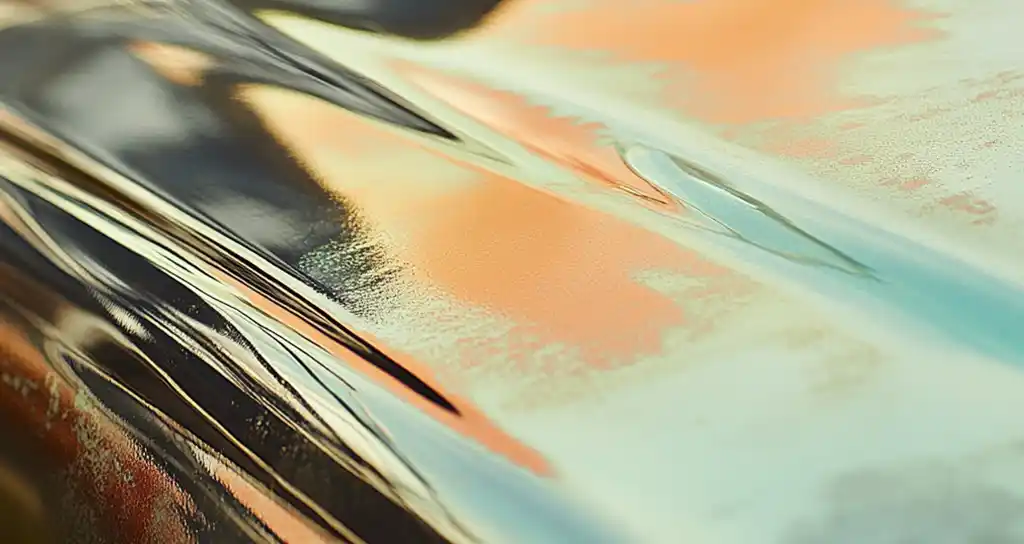
Heavy or severe water spots occur on a vehicle’s surface, particularly on the paint. These spots penetrate beyond the surface, causing etching and below-surface damage.
The level of damage depends on various factors, such as the type and concentration of minerals or chemicals in the water, as well as the type of paint or surface the water comes into contact with.
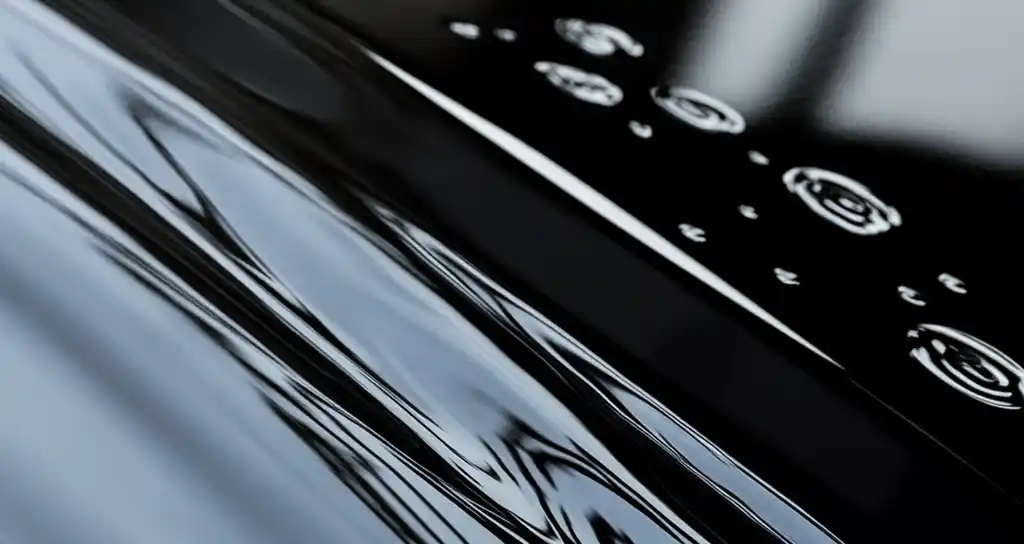
RIDS, or Random Isolated Deep Scratches, are below-surface paint defects that often go unnoticed during initial inspections due to lighter surface scratches and swirl marks covering them up.
These deeper scratches can be concealed by more superficial imperfections, making them difficult to detect at first glance.
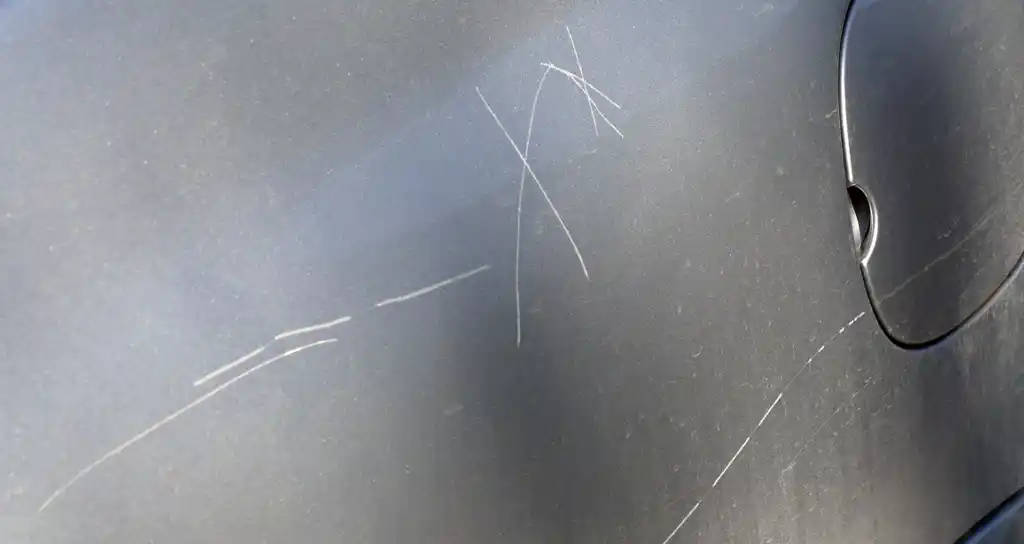
Bird droppings, are initially topical paint defects, sitting on the surface of your vehicle. However, if not promptly removed, they can become more severe below-surface defects known as bird etchings.
The high acidity and protein content in bird droppings can quickly break down the paint’s protective layer, leading to permanent damage.

Insect remains contain acidic proteins that are highly harmful to automotive finishes. The larger the insect, the more damaging protein it may carry.
To protect your vehicle’s paint, it’s essential to remove bug splatters as soon as possible before they cause permanent damage.
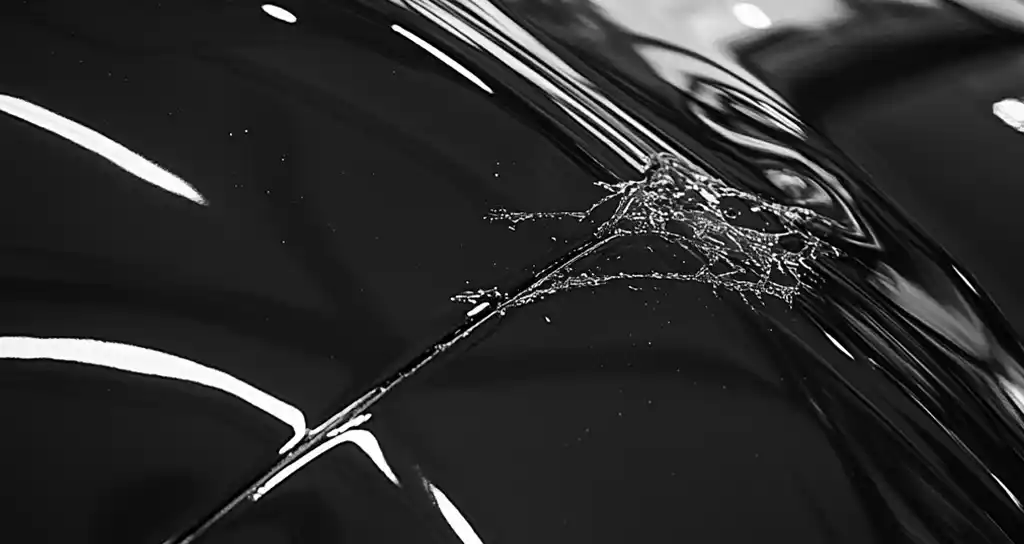
Paint overspray is a topical paint defect caused by tiny particles of paint drifting through the air and settling on a vehicle’s surface during spray painting. These particles can travel significant distances, even with precautions in place.
The method for removing paint overspray depends on the type of paint and how long it has been on the surface.
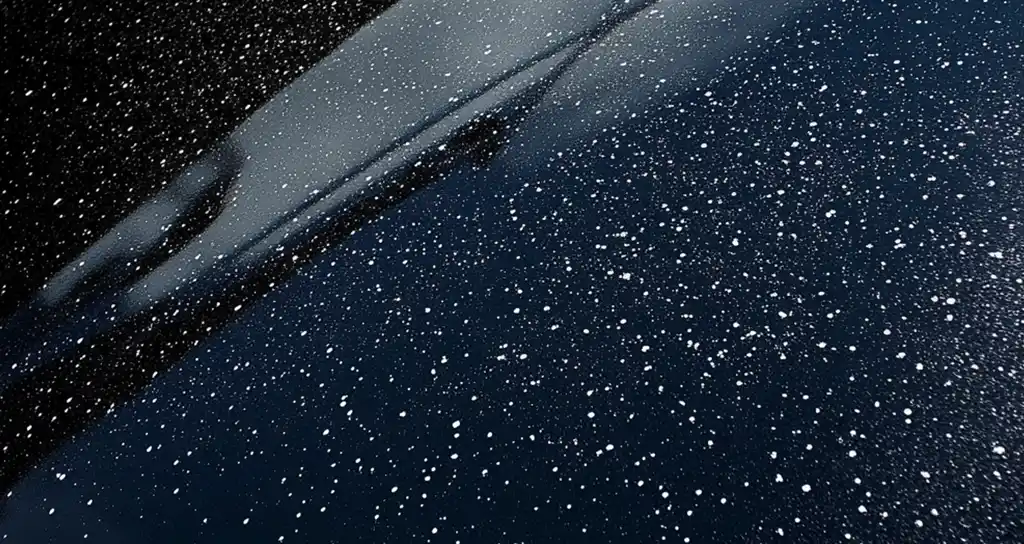
Paint scuffs are caused when an object rubs against your vehicle’s surface, leaving behind visible marks without necessarily transferring material.
For instance, scraping your car against a curb, or brushing up against a concrete wall while parking, can result in noticeable scuff marks.
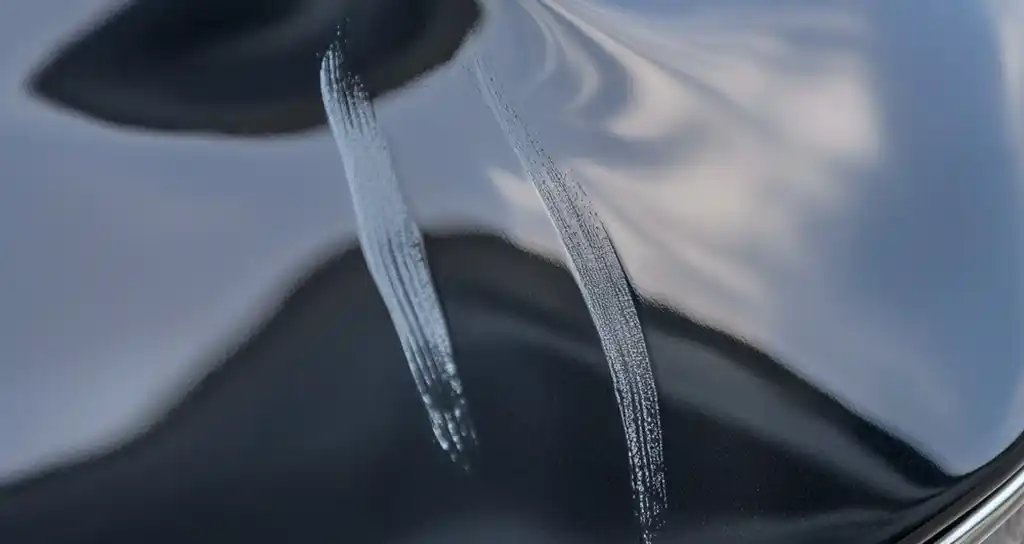
Hard water contains high concentrations of minerals, which can combine with dirt and other contaminants on a dirty vehicle, trapping them in water droplets.
As the water evaporates, it leaves behind these mineral deposits, creating light water spots.

Liquefied road tar, is a mix of hydrocarbons and rubber particles from road surfaces. Most commonly accumulating on lower rocker panels or behind wheels, road tar can be thrown onto any part of the vehicle by other cars.
During warmer months in Raleigh, tar becomes molten and easily sticks to vehicle surfaces. While road tar isn’t typically harmful to paint, if left untreated, it can cause damage over time.
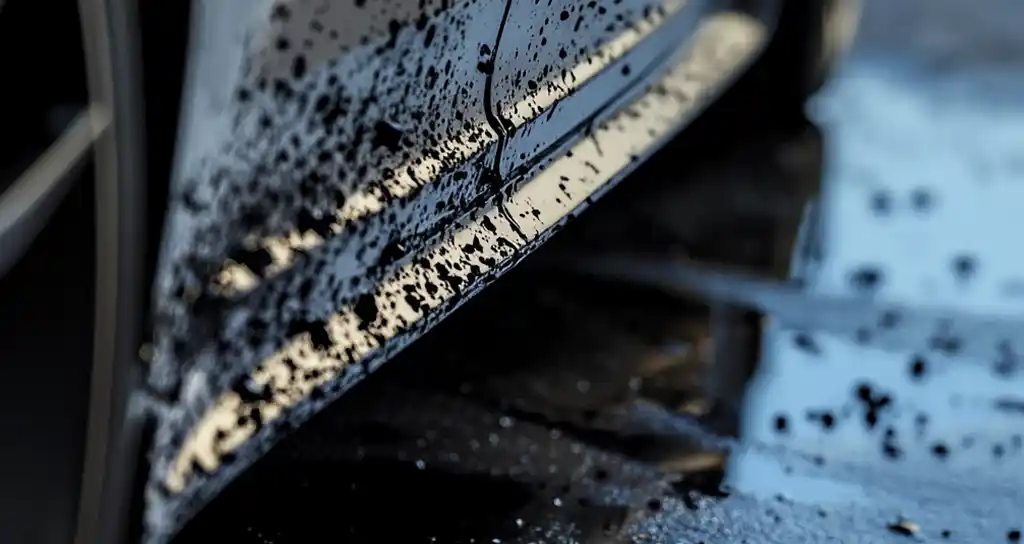
Tree sap is a topical paint defect that occurs when sap droplets or particles land on a vehicle’s surface and harden over time. Once exposed to the sun, sap can solidify into a resin-like substance, becoming difficult to remove.
If left for too long, hardened sap can cause serious damage, including etching or even permanent discoloration of the paint.
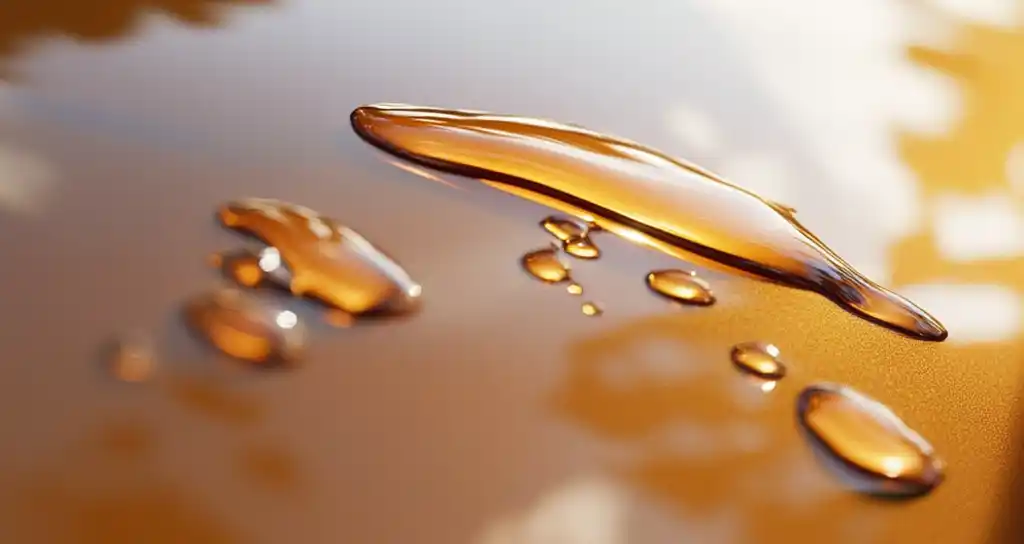
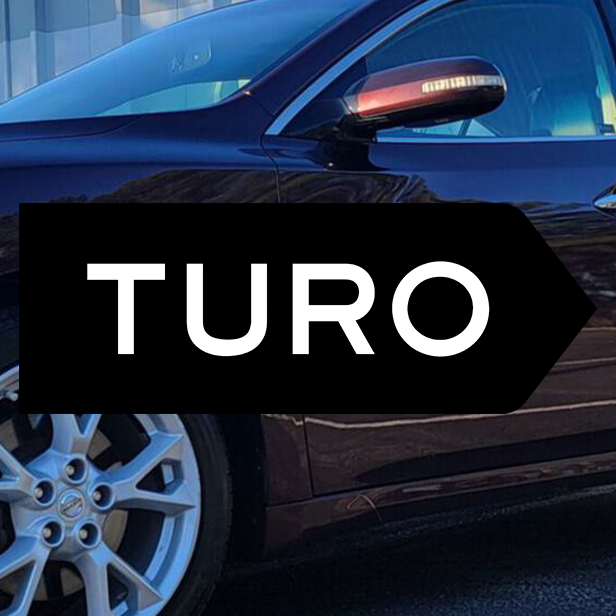
With our new pick-up and delivery option, restoring your car’s paint has never been easier! We’ll pick up your vehicle, perform expert paint correction, and return it looking flawless, so you can enjoy stunning results without any inconvenience.
At Supreme Finish, we offer hassle-free rental cars through Turo to keep you moving while we work on your vehicle. Whether it’s detailing, ceramic coating, or window tinting, our reliable rentals ensure you can get around Raleigh without interruption.
Just fill in the basic info below and we’ll be in touch.
1. Initial Cleaning and Prep
The process begins with a meticulous hand wash, using a specialized foam cannon paired with pH-balanced car soap. This ensures that every inch of the vehicle is thoroughly cleansed.
2. Wheels and Wells Attention
Next, attention is given to the wheels and wheel wells. Dirt and grime are meticulously removed to prevent any contaminants from affecting the paint surface during correction.
3. Paint Surface Decontamination
To ensure the paint is free from impurities, all surfaces undergo a decontamination process. This involves using a clay bar and iron-remover to pull out embedded contaminants that regular cleaning might miss.
4. Protective Taping
All sensitive trim parts of the vehicle are carefully taped off. This step protects these areas from the powerful compounds and polishes used later in the process.
5. Paint Thickness Analysis
Before correction begins, paint thickness gauge readings are taken. This helps in determining the appropriate level of correction needed without risking damage to the paint layer.
6. Intensive Compounding
Two stages of intensive compounding are performed using abrasive compounds and pads. This step targets and removes most surface blemishes, including scratches and oxidation.
7. Machine Finishing Polish
The final polishing stage incorporates industry-leading techniques and polishes. A machine polishing process is used to enhance depth, clarity, and gloss of the paint, leaving it looking pristine.
8. Preparation Wipe
A prep wipe is conducted to remove any oils or residues, ensuring the surface is clean and ready for the next protective steps.
For long-lasting paint protection, a ceramic coating package is highly recommended. This provides a protective layer that helps maintain the vehicle’s pristine look for an extended time.
Paint correction is a meticulous process designed to restore a vehicle’s exterior finish by eliminating imperfections like swirl marks, oxidation, bird etchings, water spots, and scratches. The goal is to rejuvenate the paint without compromising the clear coat.
Understanding Materials and Tools:
Technical Skill and Precision:
Multi-Stage Process:
The paint correction process is an intricate craft, demanding more than just a robust toolset. It’s the detailer’s expertise that truly elevates the outcome, ensuring the vehicle’s surface is restored to its original glory. Here’s why their skill is indispensable:
Precision and Technique: Paint correction involves removing imperfections like swirl marks, scratches, and oxidation. A skilled detailer uses precise techniques to carefully buff these away without damaging the paint.
Understanding of Materials: Each vehicle’s paint can vary significantly in composition and hardness. An adept detailer can assess the type of paint and adapt their methods accordingly to achieve optimal results.
Tool Proficiency: Modern buffing requires more than just a steady hand; it involves a deep understanding of various polishing machines and compounds. Mastery here means knowing how to pair and apply these tools to achieve a flawless finish.
Attention to Detail: The difference between an amateur job and professional excellence lies in the minutiae. An expert eye can identify even the smallest blemishes and address them effectively.
Personalized Approach: No two vehicles are alike. A talented detailer customizes their approach based on the specific condition and characteristics of the paint, ensuring a tailored solution for each client’s needs.
When it comes to paint correction, several key factors influence the overall cost. Let’s take a closer look at how paint type, condition, and vehicle size come into play.
Different vehicles come with varying paint types, from single-stage to multi-stage paints, each requiring unique approaches. Luxury vehicles often use high-end brands of paint , which might demand specialized techniques and materials. Thus, more complex paint jobs generally result in higher costs.
The current state of your vehicle’s paint significantly impacts correction pricing. For instance, a car with minor blemishes will require less intensive work compared to one with heavy oxidation or deep scratches. Correcting subtle imperfections generally costs less than addressing extensive damage.
The size of the vehicle is a straightforward yet crucial factor. Larger vehicles, such as SUVs and trucks, have more surface area that requires attention, leading to increased labor and materials. Smaller cars, on the other hand, generally involve less work, subsequently reducing the overall cost.
Due to these varying elements, obtaining a precise quote typically involves a detailed assessment. Professionals will evaluate your car’s paint type, condition, and size to tailor the paint correction process and its corresponding cost to your specific needs. This personalized approach ensures that your vehicle receives the necessary care without unnecessary expenses.
After investing time and effort into paint correction, you want to maintain that showroom shine while adding lasting protection. Here’s why ceramic coating is a top recommendation after paint correction:
Unmatched Gloss: Ceramic coatings elevate your car’s appearance to a mirror-like finish, creating a sleek and appealing look that stands the test of time.
Long-Term Protection: These coatings create a tough, protective layer over your vehicle’s paint. They shield against environmental factors like UV rays, bird droppings, and acid rain, preventing damage and fading over time.
Low Maintenance: Ceramic coating significantly reduces the need for frequent washing and waxing. Its self-cleaning properties mean dirt and grime have a harder time sticking to the surface, making your car easier to clean.
Warranty Backed: Many ceramic coatings come with a warranty, giving you peace of mind that the protection is both effective and reliable. This adds an extra layer of confidence in your investment.
Choosing a ceramic coating post paint correction ensures you don’t just achieve the immaculate finish you desire but sustain it with ease. By forming a barrier against the elements, your vehicle retains its stunning look with less effort on your part.
Paint correction involves a meticulous process to safely eliminate imperfections such as swirl marks, oxidation, bird etching, hard water spots, and scratches without compromising the clear coat. This process demands a high level of skill and a deep understanding of various components and techniques.
This labor-intensive process is not just about the tools but also the art of applying them correctly. It’s a skill mastered by few, ensuring that the paint surface not only looks flawless but remains protected for the long term.
A skilled practitioner is distinguished by their mastery of modern buffing techniques, which allows them to perform the process safely and effectively, setting them apart from less experienced detailers.
Professionals use equipment like random orbital and rotary buffers to perform paint correction, ensuring precision and effectiveness.
The process employs advanced nano-technology abrasives, along with synthetic compounds and polishes, to achieve desired results.
The process is detailed and labor-intensive, requiring extensive skill and knowledge of precise techniques to effectively remove imperfections without harming the clear coat.
Paint correction can tackle a variety of defects, including swirl marks, oxidation, bird etching, hard water spots, and a range of scratches, from light to heavy.